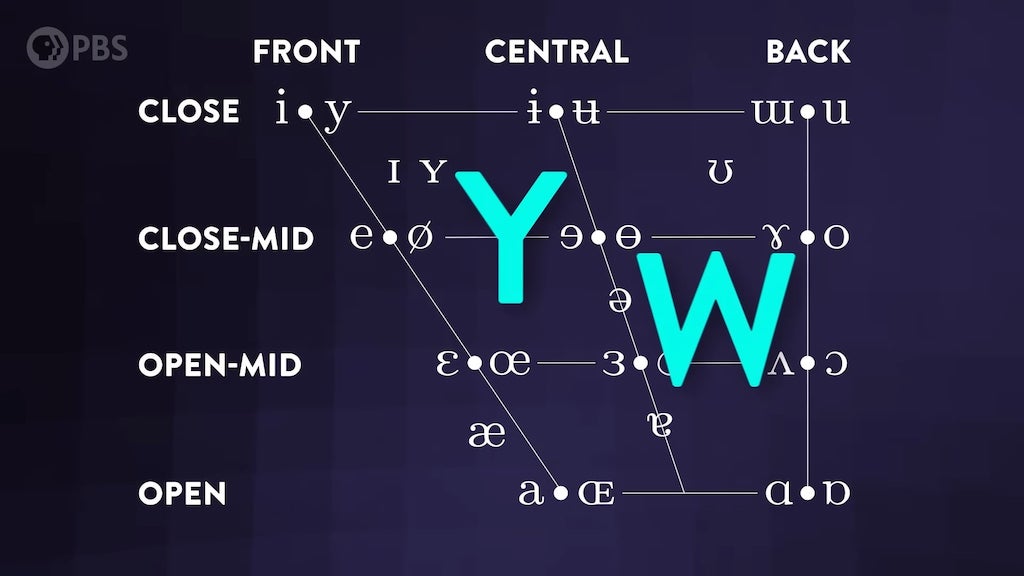How Physics Justifies the Letters Y and W as Vowels
In the PBS series, Be Smart, host Dr. Joe Hanson cites the physics behind vocal language, specifically how vowels are spoken aloud. Hanson further explains that vowels are vocalized differently than consonants due to the shape of vocal tract resonators.
Vowels are made of physics. For instance, if you say (vocalizing) your jaw is relatively closed. Your tongue is high up in your mouth. In this position there’s more space in your throat. So long wavelengths have room to resonate. And we see this lower frequency formant here. Also, when you say E, the front of your tongue is creating a tight space for the sound to pass through.
He also explains why the letters Y and W can sometimes be considered vowels.
So every language is a combination of a finite list of possible mouth noises, which are summarized in the international phonetic alphabet. And within that, every single possible vowel sound is mapped out here. …This vowel map is also why people argue whether Y and even W are sometimes vowels because the sounds they make fit on this chart.







